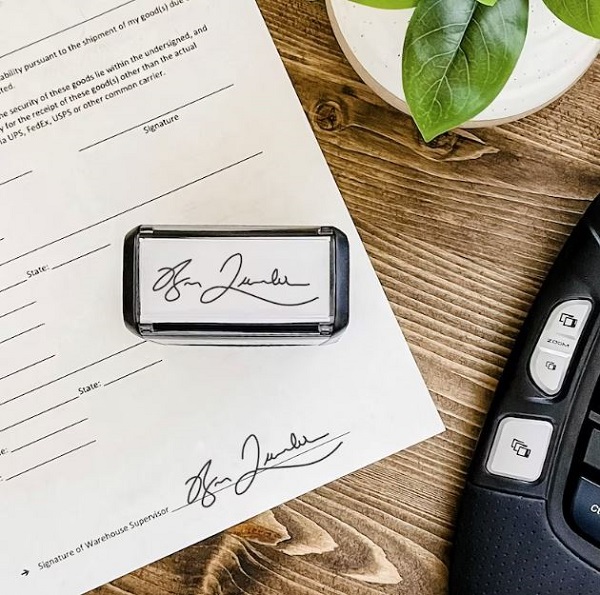Have you ever looked at a document and admired how perfectly the signature sits on it? That clean impression tells a story of professionalism, control, and identity. Designing a signature stamp isn’t just about replicating handwriting. It’s about blending character with precision. When you add your printed name clearly beneath it, the impression transforms into a mark of authority. Let’s unfold how to design one that balances both style and legibility.
The Power of Design
A signature stamp carries visual weight far beyond its size. It represents the owner’s intent, voice, and trustworthiness. That’s why the first step in design is understanding what tone your signature should project. Bold signatures suggest leadership, while lighter strokes speak of grace and calm assurance. A Signature Stamp with printed name adds a secondary layer of identity, reinforcing who stands behind the mark. That printed clarity builds confidence in every impression.
Merging Handwriting with Precision
Your handwritten style is the foundation of every design. But a stamp demands adaptation—fine lines, balanced curves, and proportionate spacing. Designers often refine natural signatures to enhance their visibility when pressed on paper. The trick lies in preserving the essence of your pen strokes while increasing their boldness. Every loop and curve must resist ink bleed and distortion. That refined version turns your everyday scribble into a timeless seal of authenticity.
Choosing the Right Font and Layout
Fonts speak languages of their own, shaping how your name appears beneath the signature. Serif fonts whisper tradition, while sans-serif fonts declare modern clarity. Placement matters too—some prefer the printed name directly below; others align it slightly offset for aesthetic symmetry. Spacing between signature and printed text must stay balanced to avoid clutter. This harmony ensures every detail appears intentional, not accidental. The final layout should breathe sophistication and quiet confidence.
Selecting the Ideal Stamp Material
Not all stamp materials carry equal endurance or definition. Rubber stamps hold classic appeal but may fade under heavy use. Pre-inked models deliver cleaner impressions for detailed designs. Self-inking stamps blend speed with consistency, ideal for frequent document signing. The material affects not only clarity but also long-term reliability. When crafted properly, the stamp face preserves every stroke of your identity. That consistency ensures your signature’s voice never falters over time.
Testing for Visual Accuracy
Before finalizing, always test multiple impressions on various paper textures. Paper fibers absorb ink differently, sometimes softening delicate lines. Reviewing multiple prints exposes any distortions or misalignments. Adjusting the depth, ink density, or alignment can refine the outcome dramatically. A signature stamp should look sharp in every circumstance—be it glossy forms or rough legal sheets. The goal is unwavering precision that mirrors your original handwriting faithfully.
Conclusion
Designing a signature stamp that includes your printed name clearly is both art and science. It requires an eye for balance and an ear for what professionalism sounds like on paper. Every detail—from font choice to material selection—defines how the world perceives your mark. When done thoughtfully, it’s more than ink pressed on a surface. It becomes your presence sealed in permanence, speaking for you even when you’re not there.

